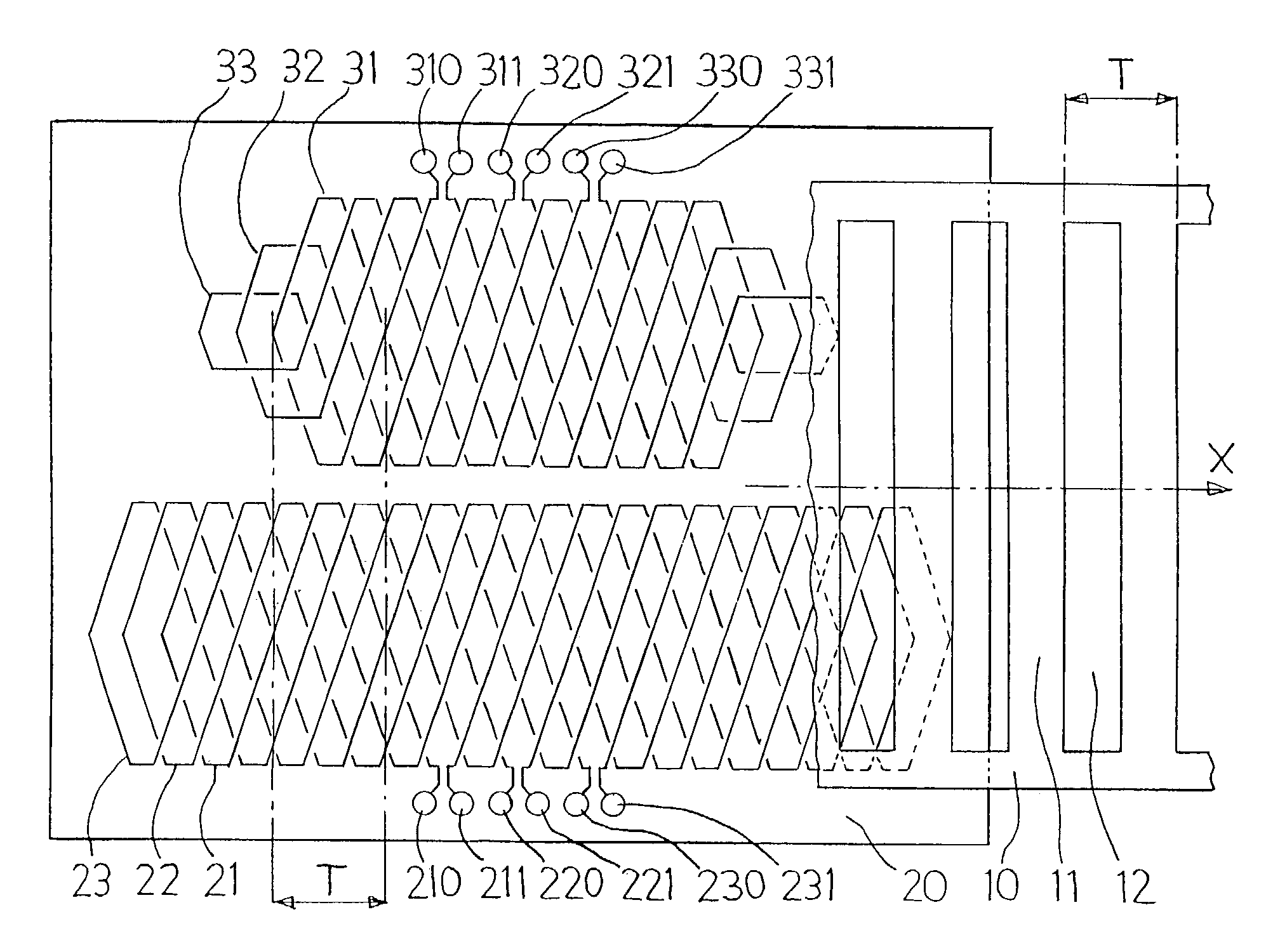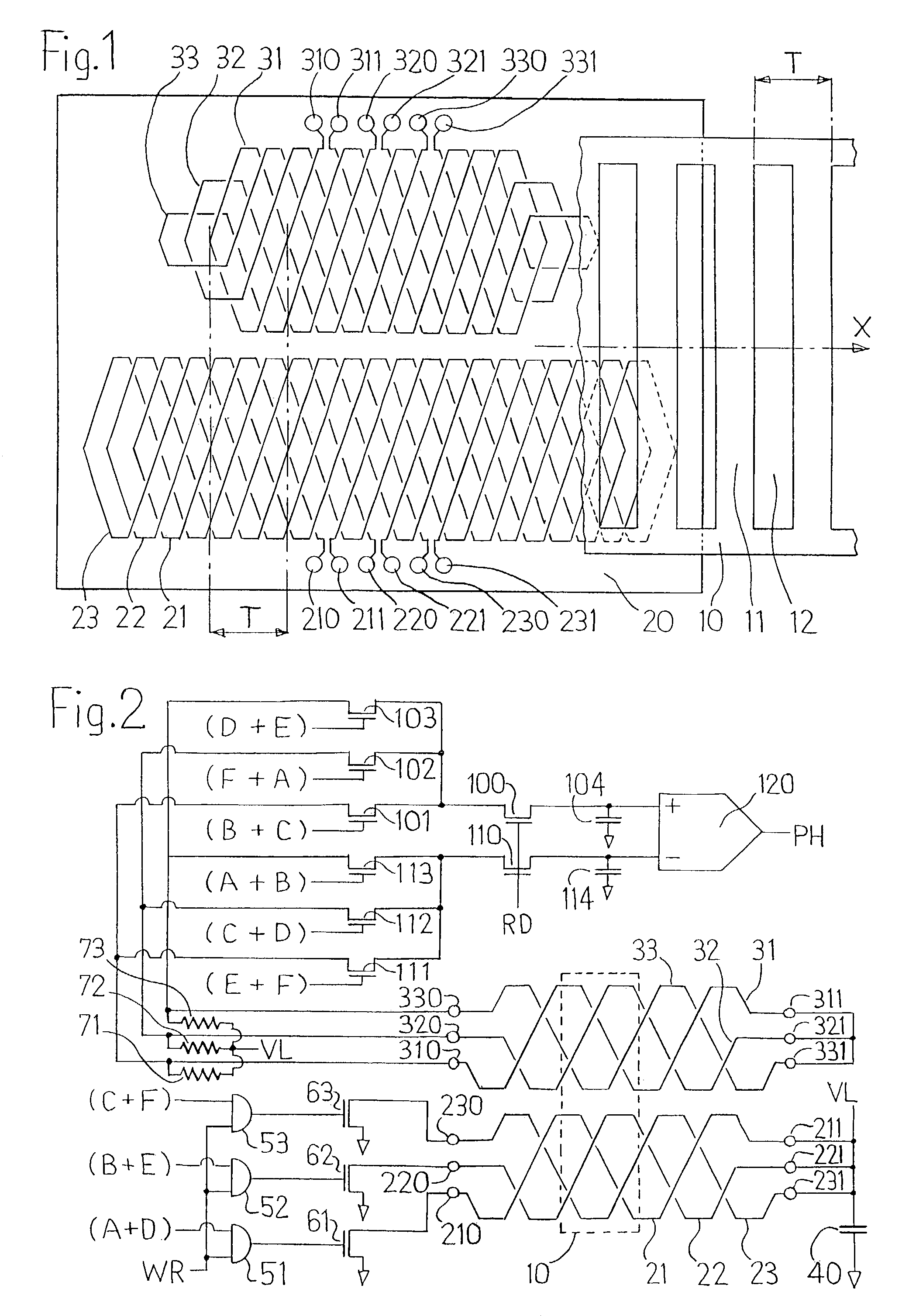Inductive position sensor with a cursor and a coupling scale
a cursor and inductive position technology, applied in the field of inductive position sensors, can solve the problems of sensor insensitive to magnetic fields influencing the part of the scale, and achieve the effect of simple alignment of the cursor along the scale and improved accuracy
- Summary
- Abstract
- Description
- Claims
- Application Information
AI Technical Summary
Benefits of technology
Problems solved by technology
Method used
Image
Examples
Embodiment Construction
[0022]The scale 10 and the cursor 20 of a sensor according to the invention are shown in FIG. 1; they are relatively movable along a measuring path x, here a straight one. The surface of the cursor 20 facing the scale is shown, as well as a part only of the scale 10, so the cursor stays visible. The planes of the surfaces of the scale 10 and of the cursor 20 facing each other are parallel to the plane of the figure.
[0023]The scale 10 is a conductive ribbon in the shape of a ladder whose rungs 11 are spaced out by a pitch T, forming a series of conductive loops also spaced out by T. Each conductive loop circles around an opening 12 between two rungs 11.
[0024]The cursor 20 has two groups of N=3 interlaced conductors, each conductor forming a zigzag of spatial period 2T whose successive hairpin turns are thus spaced out by the pitch T along the path. The inducing conductors 21, 22, 23 constitute one group, and the induced conductors 31, 32, 33 constitute the other group. These two grou...
PUM
 Login to View More
Login to View More Abstract
Description
Claims
Application Information
 Login to View More
Login to View More - R&D
- Intellectual Property
- Life Sciences
- Materials
- Tech Scout
- Unparalleled Data Quality
- Higher Quality Content
- 60% Fewer Hallucinations
Browse by: Latest US Patents, China's latest patents, Technical Efficacy Thesaurus, Application Domain, Technology Topic, Popular Technical Reports.
© 2025 PatSnap. All rights reserved.Legal|Privacy policy|Modern Slavery Act Transparency Statement|Sitemap|About US| Contact US: help@patsnap.com



